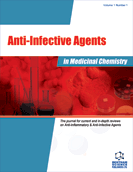Abstract
Bacterial urinary tract infections (UTIs) are frequently found in the outpatient as well as in the nosocomial setting. The bacterial UTIs can be stratified into uncomplicated and complicated UTIs. In uncomplicated UTIs Escherichia coli is the leading organism, whereas in complicated UTIs the bacterial spectrum is much broader including Gramnegative and Gram-positive organisms. Therapy of uncomplicated UTIs is almost exclusively antibacterial, whereas in complicated UTIs the complicating factors have to be treated as well. Antibiotic resistance nowadays plays an important role in the treatment of uropathogens causing uncomplicated and complicated UTIs. Especially in nosocomially acquired complicated UTIs antibiotic resistance rates are increasing to levels where empiric treatment with orally available antibiotics becomes difficult. In recent years also uropathogens causing uncomplicated UTIs became more resistant to the antibiotic substances most frequently used for this indication. There are two predominant aims in the antimicrobial treatment of both uncomplicated and complicated UTIs: i.) rapid and effective response to therapy, prevention of complications and prevention of recurrence in the individual patient treated, and ii.) prevention of emergence of resistance to anti-infective agents in the microbial environment. Bacterial resistance mechanisms to antibiotics are nowadays better understood which helps to design derivatives and new substances that will hopefully be less susceptible for the emergence of resistance. Pharmacokinetic and pharmacodynamic parameters are increasingly used to improve dosing strategies of the current antiinfective agents, to predict efficacy in patients and to minimize emergence of resistance. For the treatment of UTIs, however, these instruments are not yet developed satisfactorily enough. New treatment strategies are also needed to maintain effective treatment of UTIs. The aim of this review is to highlight the current and to describe future treatment options for UTIs. The chemistry of current substance groups and its importance for the antiinfective spectrum and activity is explained. Pharmacokinetic/ pharmacodynamic models for UTIs are described and new treatment options to cope with antimicrobial resistance are discussed.
Keywords: Urinary tract infections, uropathogens, antibiotic resistance, chemistry of antibacterial substances, pharmacokinetics, pharmacodynamics
 3
3





















